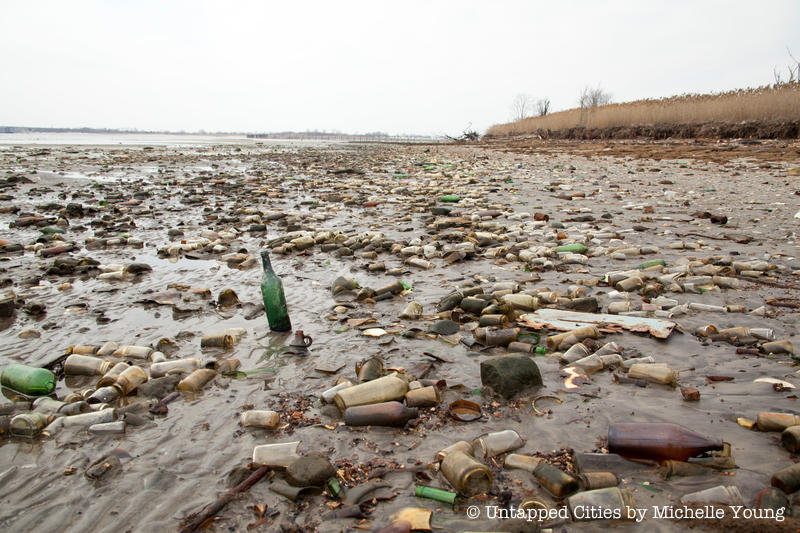2. Dead Horse Bay

Just next to Floyd Bennett Field sits Dead Horse Bay, whose macabre name aptly describes its history. Before the area was landfilled to create Floyd Bennett Field, Dead Horse Beach was once a separate island known as Barren Island. In 1859, the first horse rendering plants were constructed on Barren Island, which processed dead horses by mashing them up, steaming them, separating the products, and boiling their bones down into glue. The remnants became commercial fertilizer. This was seen as a better alternative to the ongoing practice, where horses were simply left to rot and decompose on New York City’s streets. Originally, Barren Island was considered ideal for this noxious activity because it was so remote that nobody would complain about the smell.
Later, Barren Island was also used to deal with the city’s garbage problem. Prior to the formation of the New York Sanitary Utilization Company, trash was dumped into the waterways. Motivated by financial reasons — the garbage was getting in the way of ship traffic — the city selected Barren Island for the processing and disposal of trash. Similar to the horses, the trash would be boiled and steam cooked until a layer of grease emerged at the top to be skimmed off and sold for industrial lubrication and soap. But with encroaching development, even Barren Island became too close for comfort due to the smell. The stench, which could reach a radius of six to ten miles, would waft over to beachgoers on Manhattan Beach where hotel evacuations would occur. Unsurprisingly, neighboring communities began complaining and locals formed the Anti-Barren Island League. The landfill ceased operation in the 1940s and was capped off in 1953, but the waste emerges on a daily basis due to erosion, leaving a beach of strewn bottles, old toys, and shoes. Today, Dead Horse Bay is closed to the public due to the presence of radiological contamination.





